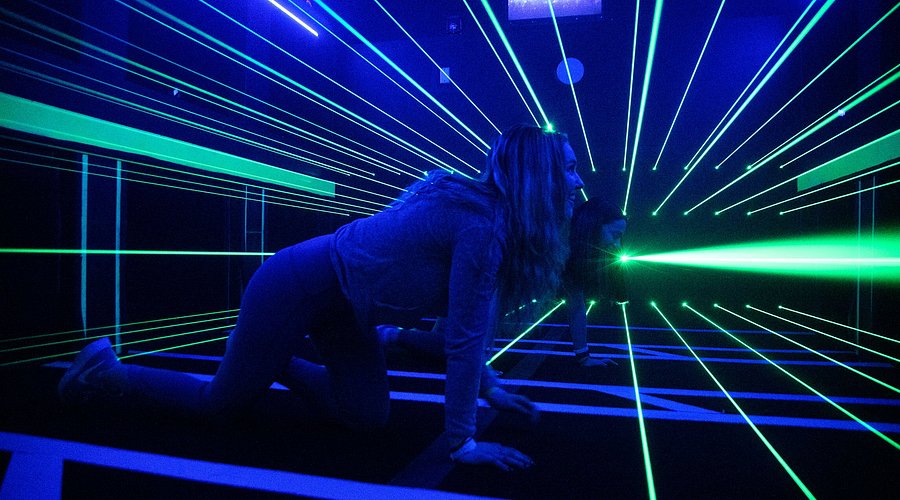The entertainment industry stands at the forefront of a technological revolution that is fundamentally transforming how humans interact with digital environments. Activate Games introduces a groundbreaking platform that redefines the boundaries of interactive entertainment through advanced human-computer interaction systems. These innovations create seamless, intuitive experiences that respond to users’ natural behaviors and preferences with unprecedented precision.
Advanced Motion Capture Technology
Our systems employ cutting-edge motion capture technology that tracks and interprets human movement with millimeter-level accuracy. Using a combination of infrared sensors, depth-sensing cameras, and inertial measurement units, the platform captures over 200 distinct data points per second. This detailed movement analysis enables the system to understand not just gross motor actions but subtle gestures and expressions, creating interactions that feel natural and responsive.
The Activate Games technology’s low-latency architecture ensures real-time response with delays measuring under 0.02 seconds, making the interaction feel instantaneous to users. This level of responsiveness is crucial for maintaining immersion and preventing the disorientation that can occur with slower systems. The motion capture system operates effectively in various lighting conditions and can track multiple users simultaneously without interference.
Intelligent Environmental Adaptation
The platform features sophisticated environment mapping capabilities that create detailed digital twins of physical spaces. Using simultaneous localization and mapping (SLAM) technology, the system understands room dimensions, furniture placement, and environmental features. This spatial awareness allows virtual elements to interact intelligently with physical surroundings, creating cohesive mixed-reality experiences.
Activate Games Adaptive calibration systems automatically adjust to different venue configurations and environmental conditions. The technology compensates for factors like ambient light levels, acoustic properties, and space limitations, ensuring consistent performance across diverse installation environments. This flexibility makes the system suitable for everything from compact retail spaces to expansive entertainment complexes.
Personalized Experience Delivery
Machine learning algorithms analyze user behavior patterns to create individually tailored experiences. The system develops comprehensive user profiles that include preferred interaction styles, skill levels, and content preferences. These profiles enable the platform to adjust difficulty levels, suggest appropriate content, and modify challenges in real-time to maintain optimal engagement.
 The adaptive difficulty system ensures that experiences remain challenging yet achievable for users of all skill levels. Beginners receive additional guidance and support, while experienced users face more complex challenges and fewer assists. This dynamic adjustment prevents frustration and boredom, maximizing engagement across diverse user demographics.
The adaptive difficulty system ensures that experiences remain challenging yet achievable for users of all skill levels. Beginners receive additional guidance and support, while experienced users face more complex challenges and fewer assists. This dynamic adjustment prevents frustration and boredom, maximizing engagement across diverse user demographics.
Multi-Sensory Feedback Systems
Advanced haptic technology provides precise tactile feedback that enhances immersion and provides important gameplay information. The system uses variable frequency and amplitude controls to create diverse tactile sensations, from subtle vibrations to pronounced impacts. This feedback can indicate successful interactions, provide environmental information, or guide user attention to important elements.
Integrated spatial audio technology creates immersive soundscapes that adapt to user positioning and movement. The system generates realistic audio environments where sounds appear to originate from specific locations in physical space. This directional audio enhances situational awareness and contributes to a more convincing immersive experience.
Real-Time Performance Analytics
Comprehensive data collection and analysis tools provide valuable insights into system performance and user engagement. The platform tracks key metrics including completion rates, error patterns, and engagement duration. These analytics help operators understand which experiences resonate with users and identify opportunities for improvement.
The system’s reporting tools generate actionable recommendations for content updates, maintenance scheduling, and operational adjustments. These data-driven insights enable continuous optimization of both the user experience and business operations, creating value for both guests and venue operators.
Accessibility and Inclusivity Features
The platform incorporates extensive accessibility options that ensure all users can enjoy the experiences regardless of physical abilities or preferences. Customizable control schemes, adjustable difficulty settings, and alternative interaction modes accommodate diverse needs and abilities. These features make the technology suitable for users with varying levels of physical mobility, visual acuity, and prior gaming experience.
The system includes special consideration for users with sensory processing differences, offering options to adjust stimulus intensity and provide additional processing time. These thoughtful design elements ensure that everyone can participate fully in the interactive experiences.
Implementation and Scalability
The modular system architecture supports flexible deployment options ranging from single installations to multi-venue enterprises. Standard implementation typically requires less than one week, with minimal disruption to existing operations. The technology integrates seamlessly with common venue management systems, including point-of-sale platforms and customer relationship management tools.
Cloud-based management tools enable remote monitoring, updates, and maintenance across multiple locations. This centralized management approach reduces operational complexity while ensuring consistent experiences across all installations. Regular software updates introduce new features and content without requiring hardware modifications.
Business Impact and Value Creation
Venues implementing our technology typically achieve significant improvements in key performance indicators:
- 45% increase in average session duration
- 38% growth in secondary spending
- 42% improvement in customer satisfaction scores
- 35% reduction in maintenance requirements
- 50% faster content deployment cycles
Future Development Direction
Ongoing research focuses on enhancing immersion through emerging technologies including augmented reality integration, advanced biometric feedback, and AI-generated content. The platform’s architecture supports seamless incorporation of new technologies as they become available, ensuring long-term relevance and continuous improvement.

